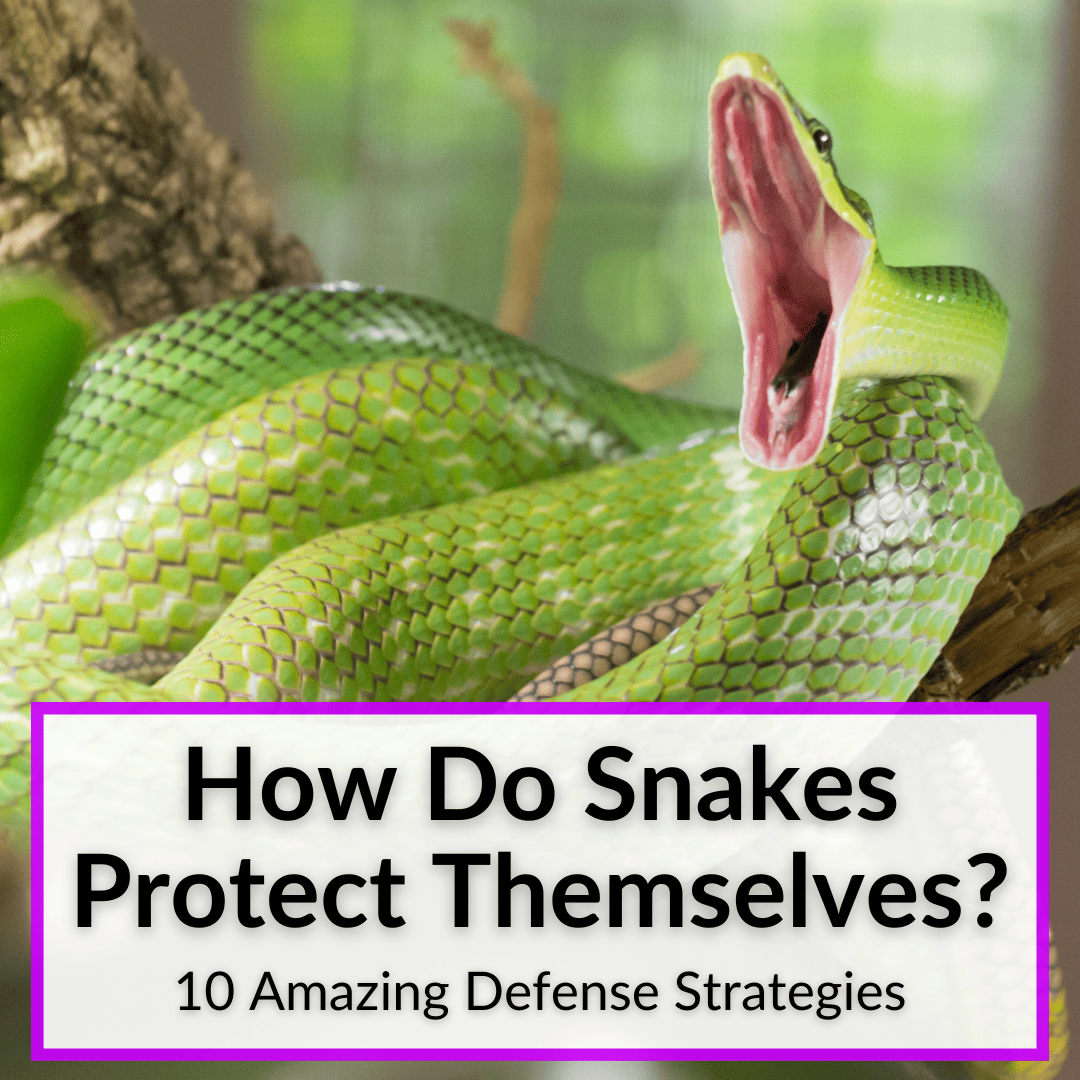
Most people see them as deadly predators.
And they are, in a sense.
But the vast majority of snakes are just as much prey as predator.
Often even more so.
How do snakes protect themselves from their own predators?
It turns out, they have a number of different defense mechanisms, depending on the species. Keep reading for all the fascinating details.
Table of Contents
How Do Snakes Protect Themselves From Predators?
Snakes use a variety of tactics to protect themselves from their predators. Most snakes are shy and prefer hiding or escaping rather than attacking or confronting their enemies.
They may camouflage themselves by blending in with their surroundings or using bright hues to warn off predators. Rattlesnakes make a menacing rattling sound to warn predators away.

Some snake species release foul-smelling musk to repel their enemies. Some spit or spray venom to paralyze their enemies and some even play dead to confuse their predators. Let’s take a closer look at the 10 most common serpentine defense strategies.
10 Defense Tactics Snakes Use To Protect Themselves From Their Predators
Here are some strategies snakes use to defend themselves from their enemies. Not every snake uses all of these strategies. It varies from one species to the next.
Using Camouflage
Some snake species have adapted to use brilliant camouflage to hide or blend in with their surroundings. They are nearly impossible to see, keeping them safe from their enemies. Here are some examples.
- Twig Snake: this snake looks just like a tree branch or a twig.
- Emerald Tree Boa: the bright green color of this snake makes it look like a leaf or tree vine.
- Copperheads: this species has earthy colors, which help them blend in with the rocks, wood, dirt, or fallen leaves in their habitats.
- Rough Green Snake: this snake has a bright green hue that helps it blend with the grass.
- Worm Snake: this guy looks like a worm and its brown color helps it blend with the sand
- Spider-Tailed Horned Vipers: these snakes blend in with their rocky habitats. They use their tail tips to lure unsuspecting birds and strike them in seconds.
Using Vibrant Hues (Aposematism)
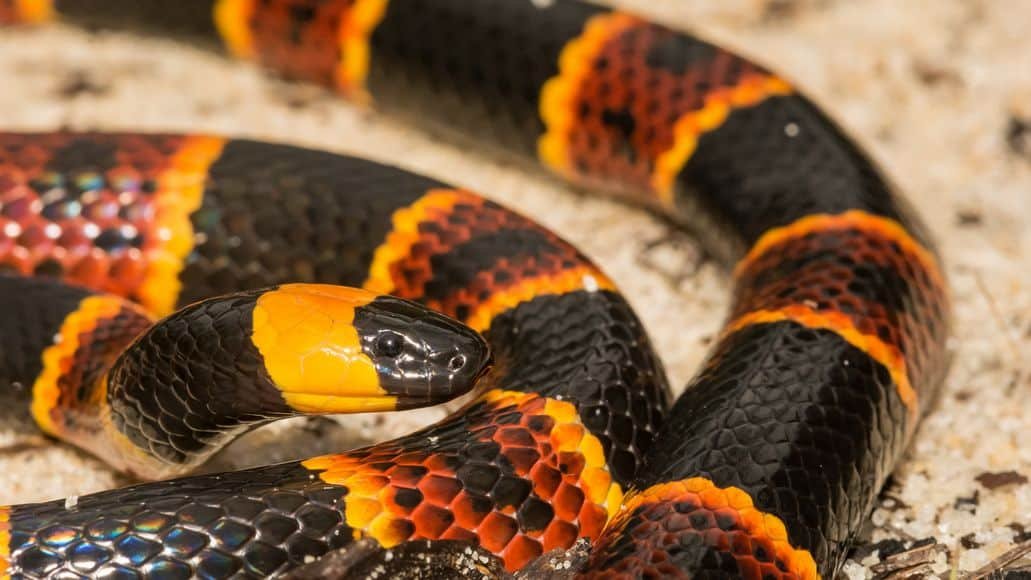
This tactic of serpentine defense is the opposite of camouflage and is known as aposematism. The snake uses its bright scales to warn predators off. Most birds and animals are alert to the danger of the snakes’ venom and stay away from them.
Hiding Or Burrowing
Snakes like the Hognose snake keep themselves safe from their enemies by escaping or hiding. They are shy creatures and prefer avoiding conflicts or confrontations. They use their snouts to burrow into the soil.
Some snake species hide under rocks, leaf piles, or mounds of sand. They basically use whatever extra cover is available in their habitat.
Escaping Or Fleeing
If hiding or burrowing isn’t an option, a snake might flee to escape from its predator. Many snakes can move surprisingly fast when they sense danger. Some can even use a backward movement.
Some arboreal snake species can even use the concertina movement to climb trees rapidly to escape their terrestrial predators.
Using A Rattling Sound
The rattlesnake uses its rattle to warn its enemies to stay away. The rattle is present on the last few scales of the snake’s tail. It is made of segments of keratin, which the snake vibrates rapidly to produce a menacing rattling sound.
Most enemies know this sound and are instantly alerted to keep away from the dangerous snake. Because of this, there are actually a few non-venomous species that shake their tails to mimic the rattlesnake, hoping it will scare away predators. Some of these snakes also look like rattlesnakes.
Huffing, Puffing, Or Hissing

Snakes hiss menacingly as a warning before attacking. The hiss is a sound of air expelled from the snake’s glottis. It makes the snake appear intimidating to its predators. And most predators stay away after hearing it.
Releasing A Foul-Smelling Musk
Rattlesnakes, rat snakes, copperheads, garter snakes, and water moccasins are some snake species that can squirt out a foul-smelling liquid to keep predators away.
These snakes release this fluid from their scent glands, which are present at the base of their tails. This musky, malodorous liquid also mixes with the snake’s feces to produce a horrible smell that repels their predators.
Spraying Venom
Deadly snake species like King Cobras paralyze their predators by spraying venom at them. This may not kill the predator but it is powerful enough to blind or paralyze them until the cobra can escape.
Some cobra species are capable of spitting or spraying venom at a distance of up to 10 feet! Surprisingly, there are still animals that can kill a cobra with ease. And not ones you might think.
Mimicking Other Deadly Snakes
Some smart snakes use mimicry to keep their dangerous predators away. For example, the non-venomous king snake has the same coloring (red, yellow, and black bands) as the poisonous coral snake to keep birds and animals away.
Similarly, as mentioned above, species like the rat snake vibrate their tails on the ground to produce a sound similar to the rattlesnake’s rattle. This hilarious and strange snake behavior is pretty funny to observe. But not as funny as the next one.
Playing Dead
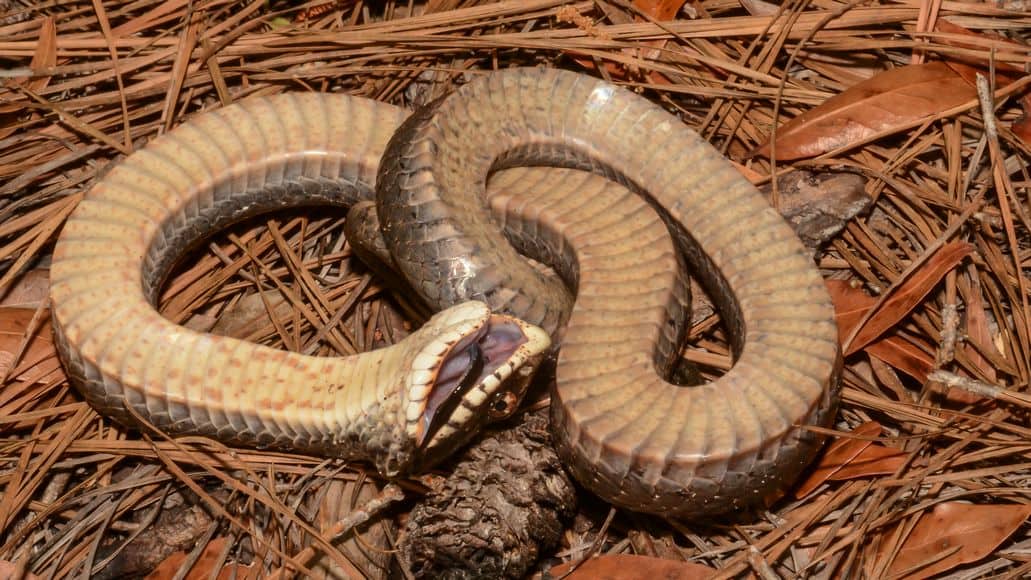
The eastern hognose snake (also called the puff adder, though this is also the name for the deadliest snake species in Africa) is a dramatic creature that plays dead when it feels threatened. For this reason, people call it the zombie snake. The snake lies motionless until the danger has passed.
It is a pretty cool defense mechanism and pretty funny when you see it. The hognose also happens to make a great pet snake, even for beginners. Our article on the similarities and differences between the hognose snake and the ball python compare it to the most popular pet snake in the US.
What Special Body Parts Do Snakes Have for Protection?
Snakes have a number adaptations that can help keep them safe from predators. We will now take a look at those.
Forked Tongues
The forked tongues help snakes in two ways. Snakes flick their tongues out to sense their environment and locate predators nearby. They also use their tongues to scare birds and other predators away.
Scent Glands (To Spray Musk)
As explained above, some snake species use the glands near their tails to spray or squirt out a foul-smelling liquid. Its musky scent repels most predators.
Fangs
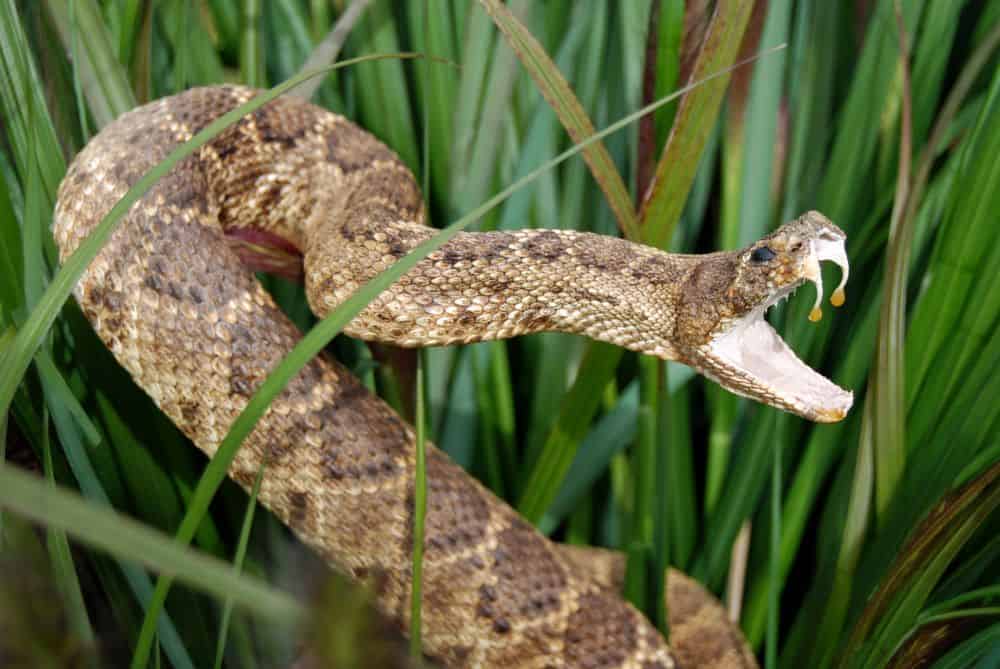
Venomous snakes have fangs that evolved to inject venom when biting. This helps snakes when hunting, but can also function to neutralize a predator.
Spitting cobras, king cobras, and other cobra species can even spit or spray venom at their enemies using their fangs. They squeeze the muscles around their venom glands to release the deadly poison.
Tail
Rattlers use their tail segments to create a deadly rattling noise to scare away their predators. Researchers also recently discovered that olive sea snakes use their light-sensitive tails to keep predators away by turning their tails away from the sunlight. They keep their tails withdrawn and hidden under shelter to prevent sharks and other sea predators from grabbing them.
Do Snakes Have Armor?
Snakes do not have armor like animals like pangolins and armadillos do. However, they do use their scales to protect themselves from their predators.
Snake scales are made of keratin. They are not hard enough to be protetice, but snakes use the scales to move away from danger (and just to move, in general).
Rattlesnakes also use their tail scales to make a threatening rattling sound.
Some pythons and boa constrictors use their scales to squeeze out the life force of their enemies and prey by coiling around their victims’ bodies. If you want a constrictor as a pet, you’ll want to learn what to do if a snake wraps around you.
Some snake species use their scales to coil tightly into a circle to make themselves as inconspicuous as possible.
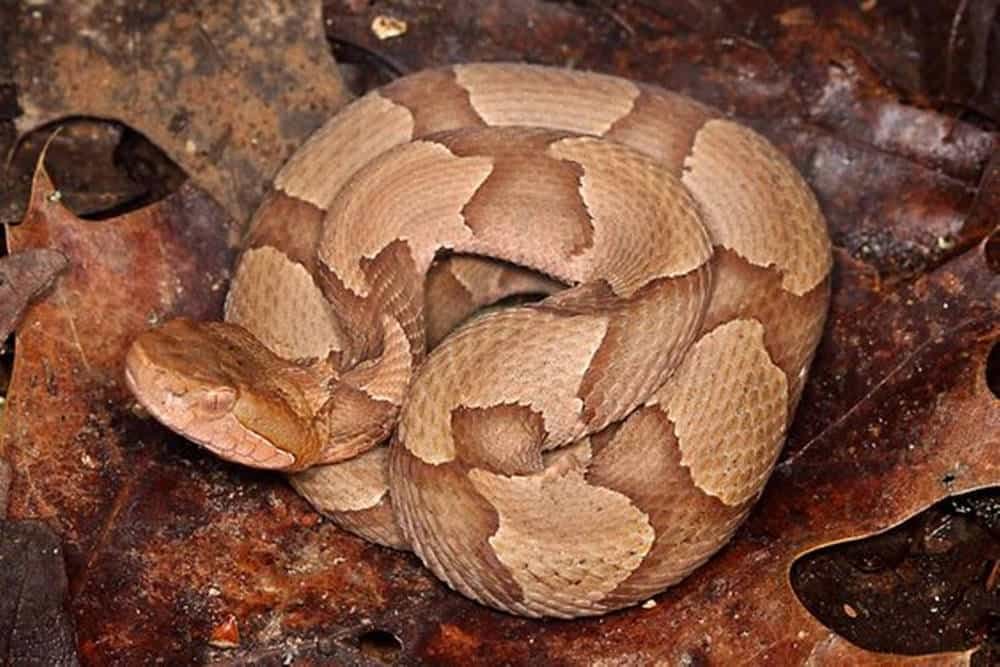
As explained above, snakes can use natural weapons like their fangs, colors, scent glands, rattles, and tongues to keep them safe from dangerous predators.
How Do Snakes Defend Themselves From Predators: Final Thoughts
There is no single answer to the question “How do snakes protect themselves?” Different species have different defense mechanisms. We covered all the main ways snakes defend themselves above, along with certain evolutionary adaptations that help keep snakes safe.
Which of the snake defense mechanisms is your favorite? Can you think of any other ways snakes protect themselves that I missed on my list? Let me know in the comments below!
Leave a Reply